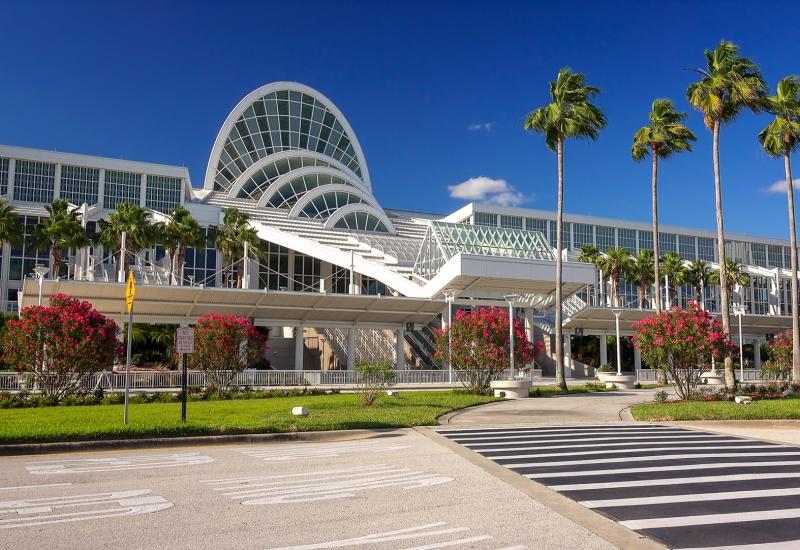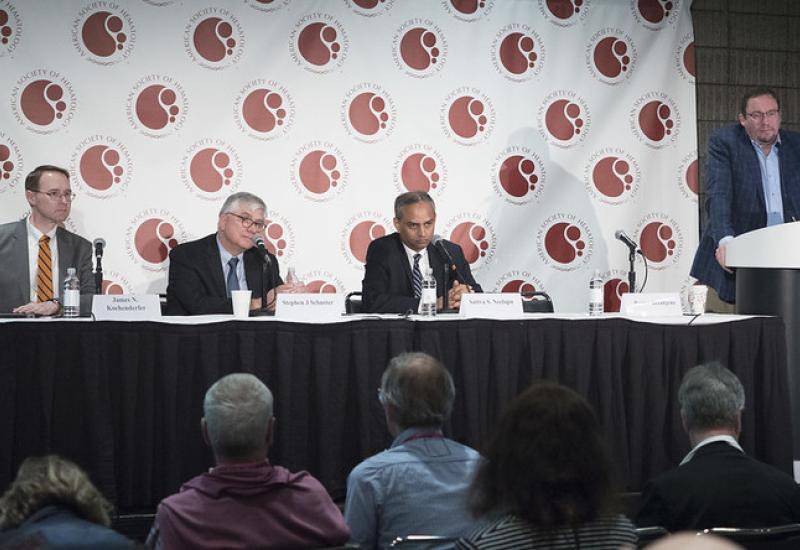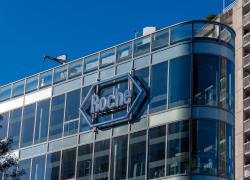
ESMO 2025 – Boehringer and Bayer eye the front line
Boehringer’s Hernexeos and Bayer’s sevabertinib look similar in first-line HER2-mutant NSCLC.
Boehringer’s Hernexeos and Bayer’s sevabertinib look similar in first-line HER2-mutant NSCLC.

Boehringer Ingelheim’s Hernexeos, already indicated for second-line HER2-mutant NSCLC, has now shown promise in the front line. New data from the phase 1 Beamion Lung-1 trial, unveiled in a late-breaking ESMO presentation on Friday, are in line with second-line data from the same study, which paved the way for the drug’s FDA accelerated approval in August.
But Boehringer’s HER2 rival Bayer isn’t too far behind with its contender sevabertinib, and ESMO also saw similar-looking results from a first-line cohort of that’s project’s phase 1/2 Soho-01 trial. Overall, the new data could be a good omen for first-line confirmatory trials of both agents, which are set to read out in the next couple of years.
In Beamion Lung-1’s first-line cohort the overall response rate was 77% among 74 patients, and 8% had a complete response. This is in line with the 75% ORR and 6% complete response rate seen in the second-line arm.
Meanwhile, in Soho-01’s front-line cohort, ORR was 71% among 73 patients, and the median duration of response was 11 months. These data, which were simultaneously published in the NEJM, are an improvement on the 59% ORR in 39 patients that Bayer reported at ASCO from the same arm.
Cross-trial comparison of Hernexeos vs sevabertinib in 1st-line HER2m NSCLC
| Hernexeos | Sevabertinib | |
|---|---|---|
| Cohort | Beamion Lung-1, Cohort 2 | Soho-01, cohort F |
| Cutoff | 8 May 2025 | 27 June 2025 |
| ORR | 77% (57/74) | 71% (52/73) |
| Complete response | 8% (6/74) | 4% (3/73) |
| Median DoR | Not reached | 11.0mths |
| TRAEs | 91% | 97% |
| Gr≥3 TRAEs | 18% | 23% |
| Gr4/5 TRAEs | 0 | 1 pt with gr4 ALT increase |
| AEs leading to discontinuation | 9% | 1% |
Source: ESMO 2025.
As for adverse events, these were said to be manageable with both agents. Notably, there were no cases of interstitial lung disease or pneumonitis with sevabertinib, while there were two cases with Hernexeos, both at grade two.
However, the ESMO discussant, Dr Anne-Marie Dingemans of Erasmus Medical Center, Rotterdam, called out a high rate of diarrhoea: 54% with Hernexeos and 84% with sevabertinib. Although most of this was low grade, she questioned how manageable this might be from a patient perspective.
First-line filing
Still, Dingemans deemed the first-line efficacy results “impressive and durable”.
In a pre-ESMO interview with ApexOnco, Boehringer’s head of oncology, Itziar Canamasas, declined to say whether the company was planning a first-line filing based on these early results, or whether it would wait for readout of the phase 3 Beamion Lung-2 trial, set to complete next year.
“What I can tell you is that the US FDA has granted us breakthrough designation based on the data we’re presenting at ESMO,” she said. “That speaks about the unprecedented impact that Hernexeos is bringing in this patient population.”
Still, the FDA will need to weigh up the projects’ risk/benefit profiles, especially as they move into earlier lines. Both agents have been linked with liver toxicity, and Hernexeos’s label comes with a note of this side effect, although it avoided a more serious black-box warning.
In the first-line cohort of Beamion Lung-1, high-grade adverse events and discontinuations looked in line with those seen in the second-line arm.
Sevabertinib is awaiting an FDA decision in second-line HER2m NSCLC, expected in the fourth-quarter, a Bayer spokesperson told ApexOnco. Bayer is also carrying out a confirmatory first-line trial, Soho-02, which has a primary completion date of April 2027; the study had once been slated to end in June 2026.
Going earlier
As well as its first-line efforts, Boehringer is soon set to begin the Beamion Lung-3 trial of Hernexeos in adjuvant HER2m NSCLC.
Around 2-4% of NSCLC patients are thought to harbour HER2-activation mutations; additionally, Boehringer has ambitions in patients with wild-type, but overexpressed or amplified HER2, and here is carrying out the phase 2 Beamion Pantumor-1 and Beamion BCGC-1 trials.
However, these studies have been delayed and are now not set to complete until December 2027 and September 2029 respectively. When asked about this, Canamasas replied that the studies had adaptive designs, so Boehringer had added more patients to confirm early signals, in the case of Beamion Pantumor-1, and new combo arms, in the case of Beamion BCGC-1.
1898













